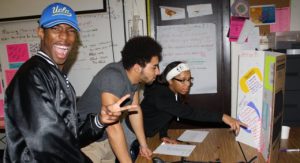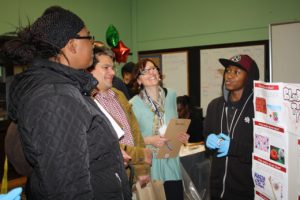Transforming schools: the key ingredient is right in front of us.
School reform is more than incorporating tech tools, being competency-based, or implementing student-centered practices. It’s more than opening the walls or focusing on core competencies. School reform starts by transforming school culture, and reforms flourish when we allow adults to be creative and compassionate human beings.
At Boston Day and Evening Academy (BDEA), we’re lucky to have a regular flow of visitors interested in learning about our unique student-centered, competency-based, trauma-sensitive learning model, and are eager to share their own best practices with us. While it’s our model that initially intrigues visitors, the conversations inevitably shift to what they see and hear in the building. They remark first on how happy the students appear to be, then on how calm the learning environment is, and finally on the respect adults and students convey to one another.
Visitors also know these are not your traditional motivated, happy, independent learners. Our students often have a lifetime of reasons to be angry, depressed, and disengaged. Before enrolling at BDEA, 97 percent of our students had already dropped out of high school or were at risk of doing so. Almost all are living in an ecosystem of poverty, food and housing insecurity, mental and physical health challenges, and suffer from various forms of violence, abuse, anxiety, and other traumas. Seventy percent of our students were suspended at least once in their previous schools. It’s no surprise, then, that many struggle to build healthy relationships, bridge gaps in their learning, and make healthy life choices that lead toward graduation and adult opportunities. But once at BDEA, students tell visitors they feel safe, respected, and free to be exactly who they are without judgment.
So what’s going on here? How did this happen? Why are the students happy and learning?
At BDEA, we believe that if you create the conditions for adults to do great work, they serve students well. To make this happen, we’ve focused on creating a professional learning environment that fosters respect, creative thinking, and accountability. Our student-centered environment is a product of our teacher-focused professional learning. We find, again and again, that when adults are empowered, supported, and given ample space to be creative, our learners’ environment mirrors those conditions.
For example, in contrast to the old maxim, “Don’t let them see you smile ‘til January,” we say, “Please smile on day one!” We encourage educators to show their students that they have a personality and are unique, just like them. When our students see us as humans, they can connect. When they can connect, they can learn to trust, and when they trust, they want to learn from us and strive to achieve.
In my next blog post, I’ll describe the characteristics and ingredients of our school culture, and how we accomplish an environment where both students and teachers thrive.
Read part two and three of this series. Want to learn more about Student-Centered Learning in New England, or school and district-based examples of student-centered learning? Check out our map.


